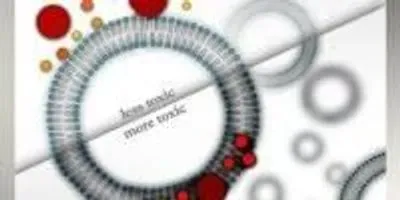 Steven Lenhert, associate professor of biological science.Photo courtesy of Florida State UniversityNanotechnology has become a growing part of medical research in recent years, with scientists feverishly working to see if tiny particles could revolutionize the world of drug delivery.
Steven Lenhert, associate professor of biological science.Photo courtesy of Florida State UniversityNanotechnology has become a growing part of medical research in recent years, with scientists feverishly working to see if tiny particles could revolutionize the world of drug delivery.
But many questions remain about how to effectively transport those particles and associated drugs to cells.
In an article published Mar. 8 in Scientific Reports, FSU associate professor of biological science Steven Lenhert takes a step forward in the understanding of nanoparticles and how they can best be used to deliver drugs.
After conducting a series of experiments, Lenhert and his colleagues found that it may be possible to boost the efficacy of medicine entering target cells via a nanoparticle.
“We can enhance how cells take them up and make more drugs more potent,” Lenhert said.
Initially, Lenhert and his colleagues from the University of Toronto and the Karlsruhe Institute of Technology wanted to see what happened when they encapsulated silicon nanoparticles in liposomes—or small spherical sacs of molecules—and delivered them to HeLa cells, a standard cancer cell model.
The initial goal was to test the toxicity of silicon-based nanoparticles and get a better understanding of its biological activity.
![]() Size separated lipophilic silicon nanoparticles that fluoresce from red to infrared are encapsulated into liposomes and delivered to cells. Specific particles are found to encapsulate better into the liposomes and thus enhance cellular uptake and toxicity when delivered to cancer cells.Image courtesy of Florida State UniversitySilicon is a non-toxic substance and has well-known optical properties that allow their nanostructures to appear fluorescent under an infrared camera, where tissue would be nearly transparent. Scientists believe it has enormous potential as a delivery agent for drugs as well as in medical imaging.
Size separated lipophilic silicon nanoparticles that fluoresce from red to infrared are encapsulated into liposomes and delivered to cells. Specific particles are found to encapsulate better into the liposomes and thus enhance cellular uptake and toxicity when delivered to cancer cells.Image courtesy of Florida State UniversitySilicon is a non-toxic substance and has well-known optical properties that allow their nanostructures to appear fluorescent under an infrared camera, where tissue would be nearly transparent. Scientists believe it has enormous potential as a delivery agent for drugs as well as in medical imaging.
But there are still questions about how silicon behaves at such a small size.
“Nanoparticles change properties as they get smaller, so scientists want to understand the biological activity,” Lenhert said. “For example, how does shape and size affect toxicity?”
Scientists found that 10 out of 18 types of the particles, ranging from 1.5 nanometers to 6 nanometers, were significantly more toxic than crude mixtures of the material.
At first, scientists believed this could be a setback, but they then discovered the reason for the toxicity levels. The more toxic fragments also had enhanced cellular uptake.
That information is more valuable long term, Lenhert said, because it means they could potentially alter nanoparticles to enhance the potency of a given therapeutic.
The work also paves the way for researchers to screen libraries of nanoparticles to see how cells react.
“This is an essential step toward the discovery of novel nanotechnology based therapeutics,” Lenhert said. “There’s big potential here for new therapeutics, but we need to be able to test everything first.”
Other researchers contributing to the work are Aubrey Kusi-Appiah, Lida Ghazanfari and Plengchart Prommapan from Florida State University; Melanie Mastronardi, Chenxi Qian, Ken Chen and Geoffrey Ozin from the University of Toronto; and Christian Kubel from Karlsruhe Institute of Technology in Germany.
This work was funded by the National Institutes of Health.
Interested in learning more? Read about this work in Lenhert’s own words.











